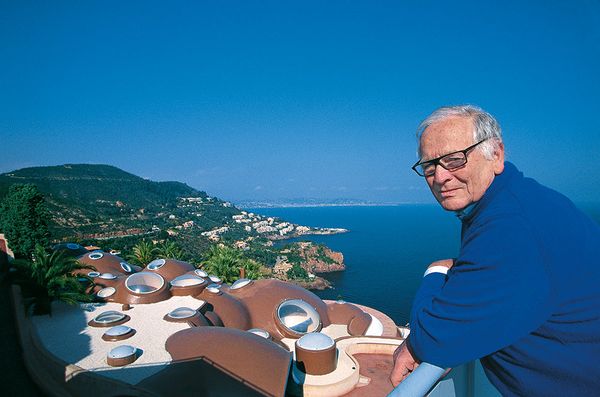Pierre Cardin at Palais Bulles. Courtesy of NOMAD.
The iconic fashion designer Pierre Cardin has had a long and boundary-breaking career. After working for Schiaparelli and Dior, he designed his first bubble dresses in 1954 and, subsequently, became the first couturier on the cover of TIME. By 1979, he was even designing airplanes for Atlantic Aviation. He is known for his avant-garde style and his Space Age designs, often preferring geometric shapes and motifs.
Pierre Cardin is also, famously, the owner of the Palais Bulles or "Bubble Palace," a remarkable work of architecture—and the inspiration for the NOMAD and Phillips private sales collaboration. We were lucky enough to catch up with Cardin, to learn more about his relationship to the storied home, how it couples with his personal philosophies and taste for experimentation, and where he sees himself within its undulating forms.

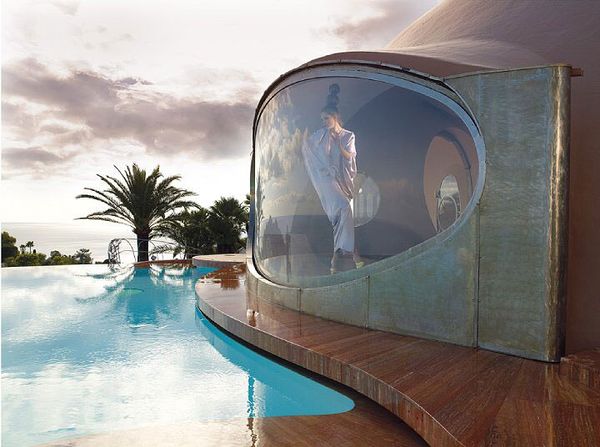
Photography by Jean-Pascal Hesse. Courtesy of NOMAD.
PHILLIPS: Pierre, you are one of the greatest designers of this century. How did you come to design and what is your design philosophy?
PIERRE CARDIN: I really don't think I'm the greatest designer of this century. I am a designer who loved his work and who has explored all areas of design throughout his life. Fashion is still my passion and design is an accessory! This came rather naturally to me, I always loved to draw and create in the absolute.
I've always been fascinated by the circle, the planets...the conquest of space...by geometric shapes and offbeat structures
P: How and when did you first see Palais Bulles? Why did you decide to acquire the place?
PC: I have owned a property in Théoule-sur-Mer for over fifty years, and at the end of the 1970s I saw Palais Bulles come out of the ground. The former owner, Pierre Bernard, was a friend of mine and I was able to go to the site on different occasions and meet Antti Lovag. In 1992, at the end of his life, Pierre Bernard asked me to buy the Palais Bulles from his heirs and to continue his work, which I accepted with joy.
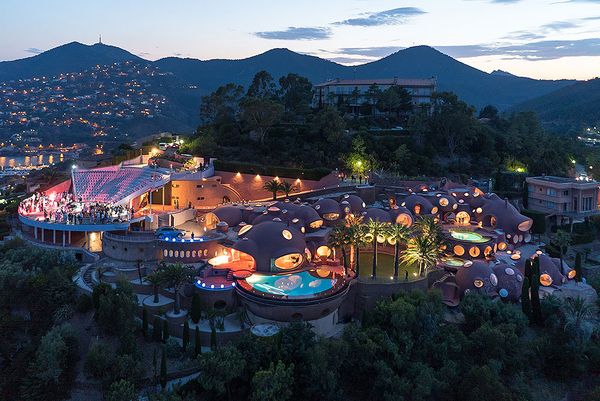
Courtesy of NOMAD.
P: What is the most beautiful or remarkable element of the house?
PC: It's a whole. It's a house that resembles me, there's a good energy, I'm close to nature—the ideas of the Maison Bulles correspond to a certain philosophy of my life. It also represents a certain futuristic and experimental universe that has always fascinated me.
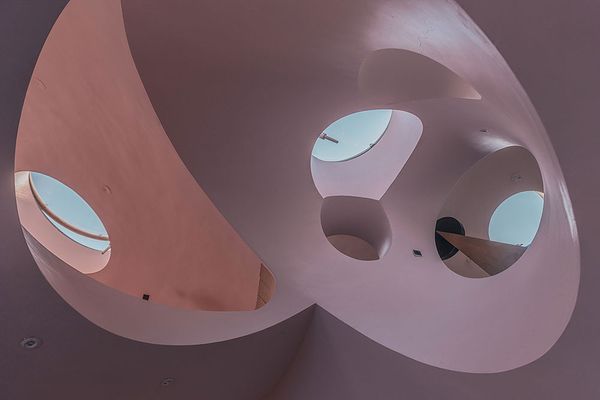
Photography by J'Adore Ce Que Vous Faites. Courtesy of NOMAD.
P: In what way did Palais Bulles influence your own designs?
PC: I've never been influenced by anything, but I've always been fascinated by the circle, the planets...the conquest of space...by geometric shapes and offbeat structures.

Photography by J'Adore Ce Que Vous Faites. Courtesy of NOMAD.
P: It is a complex and powerful place, how does one balance between making it more Pierre Cardin while keeping the legacy of Antti Lovag alive? How did you decide how to furnish it?
PC: With Antti Lovag, we worked together! We have the same vision of architecture and construction in space. We were free men with a taste for experimentation.
Visiting Palais Bulles is like an experience, something very personal.
P: How would you recommend a visitor spend their day at Palais Bulles?
PC: Well, Palais Bulles is not open to the public, but I would recommend that they take a tour of the premises and let themselves be carried away by the architecture, by its undulating and feminine forms. Visiting Palais Bulles is like an experience, something very personal. And don’t forget to go to the stage of the amphitheater. You'll see: you're really right between sky and sea. The amphitheater is me.
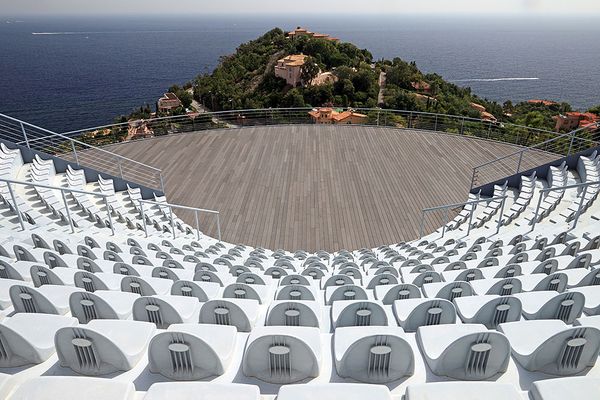
Photography by Louis-Philippe Breydel. Courtesy of NOMAD.

Discover More
The Whimsical and the Tropical: A Unique Table by Claude Lalanne >
Suspended Expression: Shiro Kuramata's 'Miss Blanche' Chair >
